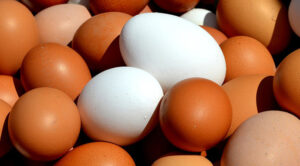
Ukrainian Foreign Minister Andriy Sybiga said that the Foreign Ministry will play a role in relation to potential partners in the controlled export of Ukrainian weapons.
“Support for our defense industry is an absolute priority for our diplomacy. It includes three priorities. The first is more investment. The second is support for the president’s initiative on the possibility of exporting surplus products from our defense industry,“ Sybiga said during his opening remarks at the third International Defense Industry Forum (DFNC3) on Monday.
According to Sybiga, the Foreign Ministry ”will play its role here with regard to potential partners.”
“Those countries that today take a passive position on supporting Ukraine, that provide covert or overt support for Russian aggression, will certainly not be included in the list of partners who will be able to cooperate with Ukraine and Ukrainian companies in this area,” the head of the ministry said.
The third priority of the Foreign Ministry in supporting the Ukrainian defense industry, Sibiga added, is “to create a real multiplier effect from our weapons.” In particular, this refers to the creation of jobs for Ukrainian citizens in Ukraine.
“This, by the way, is also our integration into the European Union. The latest Eurobarometer says that it is precisely because of our contribution to security that we are most eagerly awaited as a future member of the EU,” the minister added.
https://interfax.com.ua/news/diplomats/1110142.html

A mechanism for confirming exporters as commodity producers, which will allow them to avoid paying the recently introduced 10% duty on exports of soybeans and rapeseed, should be in place by the end of next week, said Deputy Minister of Economy, Environment, and Agriculture of Ukraine Denys Bashlyk.
“It will be as convenient as possible, the software is already 90% ready. The Cabinet of Ministers will make a decision next week,” he said at the Forbes Agro conference in Kyiv on Friday.
Bashlyk noted that there are currently situations where producers export and are forced to pay duties because there is no such confirmation mechanism.
According to him, the confirmation mechanism is planned to be implemented through the state agricultural register so that it does not take too much time, does not require “a million references” and the need to confirm each batch.
As for the duties already paid by commodity producers, the government is preparing amendments to the law on the state budget for 2025, which will allow the return of duties already paid, the deputy minister said.
In general, he noted that the Ministry of Economy is against the abolition of the 10% duty on exports of soybeans and rapeseed.
“We understand the risks that farmers may face, but it should be noted that there is another side to this story — the creation of a separate fund to which the paid duties will be transferred. And so, should the abolition of these so-called soybean amendments be on the agenda today? No, it should not,” Bashlyk said.
Farmers at the Forbes Agro conference criticized the introduction of this duty because, in their opinion, processors at the beginning of the war, due to logistics problems, received high profits at the expense of agricultural producers, and now processing does not require such privileges and should pay the market price for raw materials, competing with importers. According to the speakers, these duties will result in a reduction in rapeseed and soybean crops and a deterioration in crop rotation.
The head of Ukraine’s largest oil producer, Kernel, Yevgen Osipov, canceled his planned interview at the conference, and the founding editor of Forbes Ukraine, Volodymyr Fedorin, who was supposed to conduct the interview, said that Osipov did not like the publication’s article criticizing the duty.
As reported, Law No. 13157, signed by the president on September 2, stipulates that agricultural producers and cooperatives that export their own products will be exempt from paying duties. However, due to the lack of clear rules for documentary confirmation of the origin of goods, the mechanism does not actually work, and the export of oilseeds has been largely blocked.
A number of agricultural associations, including the All-Ukrainian Agrarian Council (VAR), the Ukrainian Agribusiness Club (UAC), the Ukrainian Grain Association (UGA), the Ukrainian Agrarian Confederation, as well as the European Business Association and the American Chamber of Commerce, have appealed to the Cabinet of Ministers and the Verkhovna Rada to repeal the law establishing a 10% duty on exports of soybeans and rapeseed as soon as possible.
On September 19, MP Yaroslav Zheleznyak (Voice faction) registered a corresponding bill No. 14055 on the repeal of the “soybean and rapeseed amendments.”

The Export Credit Agency (ECA) supported UAH 282.7 million in exports in August 2025, according to the ECA website.
Among banks, the agency’s largest partners during this period were Kreditvest Bank, which provided support for exports worth UAH 156.6 million by lending UAH 102.2 million to businesses, Oschadbank, which provided UAH 59.2 million, and Ukrgasbank, which issued UAH 22.1 million in loans, providing UAH 39.9 million in future export proceeds.
In August, the ECA’s services were most used by exporters in Kyiv (UAH 179.1 million in supported exports), the Kyiv region (UAH 25.4 million), and the Lviv region (UAH 23.9 million).
Among the importing countries, Germany remains one of the key destinations, with exports worth UAH 104.8 million. Deliveries to India will amount to UAH 59.2 million, to Moldova — UAH 36.5 million, to the United Kingdom — UAH 25.4 million, and to Poland — UAH 23.9 million.
In terms of product structure, the largest exports will be furniture and interior items, various ready-made food products, wood and wood products, mixtures of vegetable and milk fats, cocoa and cocoa products.
The Export Credit Agency of Ukraine (ECA) is a state institution that supports non-raw material exports by insuring the risks of enterprises and banks. The agency insures foreign economic contracts, export credits, bank guarantees, and investment credits against military risks.

In January-August 2025, Ukraine exported nearly 1.4 billion eggs worth $119.5 million, which is 2.6 times more than in the same period of 2024, according to the Ukrainian Poultry Union.
The industry association noted that in August, Ukrainian producers exported 168.2 million eggs worth a total of $16.4 million, which is 81.9% more than in the same period of 2024.
The main buyers of Ukrainian eggs in January-August 2025 were Spain (11% of total exports), Croatia (10.9%), and the United Kingdom (10.6%).
The largest shipments in August were to Spain (37.1 million eggs), the Czech Republic (28.9 million eggs), and Poland (21.7 million eggs).

Ukraine has the potential to expand bilateral agricultural trade with the US, particularly in the export of meat, eggs, corn, and queen bees, according to the State Service for Food Safety and Consumer Protection following a working visit to the US by the agency’s head, Serhiy Tkachuk.
The State Service noted that during the visit, Tkachuk held meetings with representatives of three departments of the US Department of Agriculture.
Together with the USDA Foreign Agricultural Service (FAS), the parties discussed increasing bilateral trade in agricultural products. Ukraine has the potential to replace Russian and Chinese products on the American market, the agency assured. Particular attention was paid to opening the US market for Ukrainian poultry and eggs.
Negotiations with the USDA Food Safety Inspection Service (FSIS) focused on access to the US market for Ukrainian poultry meat and eggs. The State Service of Ukraine for Food Safety and Consumer Protection has already provided all the necessary information and expressed its readiness to undergo inspections, including online. This practice has been successfully applied in cooperation with the United Kingdom, Canada, and the EU.
The Ukrainian side emphasized the importance of moving forward with applications for the export of pork and beef, and the FSIS confirmed its readiness to begin technical consultations.
The meeting with the USDA Animal and Plant Health Inspection Service (APHIS) was devoted to the epizootic situation, the procedure for assessing the status of diseases, and inspections.
In addition, the meetings discussed the prospects for exporting Ukrainian corn and queen bees. The American side positively assessed the dynamics regarding corn and promised to consider the issue of bees in the near future.
“These dialogues confirm that even in times of war, the Ukrainian agricultural sector remains a reliable and promising partner. We feel the support of our American colleagues and their willingness to move forward in opening up new opportunities for Ukraine,” concluded the head of the State Food and Consumer Service.